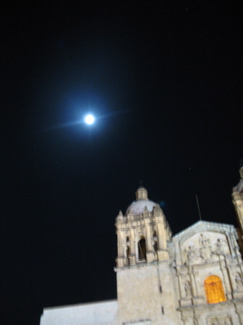José María Arguedas: Two short stories.
“The Pongo’s Dream” and “Warma Kuyay” both sketch interactions between hacienda-owner and Indians, emphasizing how in the contrasting social positions where the hacienda owner holds such power over the Indians violence is ever-present. “The Pongo’s Dream” contrasts the lord with his humblest worker, the lord’s hatred of the house servant and gratuitious violence towards humiliation of him. The religious settling of accounts, via the servant’s dream, connects with the Inkarri myth. The setting of the lord’s mistreatment of the servant, at the saying of prayers (Hail Mary) emphasizes the hypocrisy of the lord and has echoes of Luke’s parable of the rich man and Lazarus (Luke 16:19-31). In the parable the rich man and Lazarus never meet – Lazarus is a beggar lying outside the gate who is taken up to heaven beside Abraham, while the rich man suffers in Hades.
“Warma Kuyay” explores the gap between hacienda-owner and Indians in the interactions of the young people. Ernesto, though spending time with the Indians, and loving their festivals, cannot accept the wrongdoing of his uncle, raping Justina, and though thinking of himself as a kind and tender lover of animals, is responsible for tremendous violence towards the animals and Kutu. The story explores in a concise way the violence set loose through the system of relationships and the blindness of the hacienda owner’s son to the power relationships. I especially like Arguedas making use of the role of the animals in exploring the perpetration of human violence and in both stories Arguedas’s evocation of the tremendous disdain the powerful have for the Indians.
: Two short stories.
“The Pongo’s Dream” and “Warma Kuyay” both sketch interactions between hacienda-owner and Indians, emphasizing how in the contrasting social positions where the hacienda owner holds such power over the Indians violence is ever-present. “The Pongo’s Dream” contrasts the lord with his humblest worker, the lord’s hatred of the house servant and gratuitious violence towards humiliation of him. The religious settling of accounts, via the servant’s dream, connects with the Inkarri myth. The setting of the lord’s mistreatment of the servant, at the saying of prayers (Hail Mary) emphasizes the hypocrisy of the lord and has echoes of Luke’s parable of the rich man and Lazarus (Luke 16:19-31). In the parable the rich man and Lazarus never meet – Lazarus is a beggar lying outside the gate who is taken up to heaven beside Abraham, while the rich man suffers in Hades.
“Warma Kuyay” explores the gap between hacienda-owner and Indians in the interactions of the young people. Ernesto, though spending time with the Indians, and loving their festivals, cannot accept the wrongdoing of his uncle, raping Justina, and though thinking of himself as a kind and tender lover of animals, is responsible for tremendous violence towards the animals and Kutu. The story explores in a concise way the violence set loose through the system of relationships and the blindness of the hacienda owner’s son to the power relationships. I especially like Arguedas making use of the role of the animals in exploring the perpetration of human violence and in both stories Arguedas’s evocation of the tremendous disdain the powerful have for the Indians.
Subscribe to:
Post Comments (Atom)

True. Both stories deal with the exploitative relations in the haciendas. However, Warma kuyay introduces an "inbetween" character, Ernesto, neither indian nor oppressor.
ReplyDelete